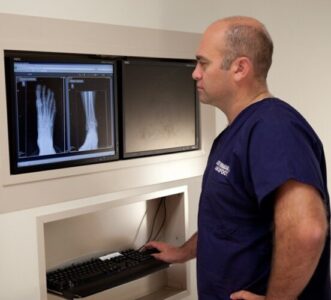*UPDATE – We are no longer offering virtual visits, as they are no longer covered by insurance*
The healthcare industry appears to be at a crossroads, as more and more physicians are getting out of healthcare, and there simply aren’t enough new doctors to replace those bright minds. This leaves us with a physician shortage, and it’s a crisis that is unlikely to solve itself without prompt bipartisan action.
Challenges Facing Physicians In 2023
There are a number of challenges that physician are facing as 2023 draws to a close, and the largest continues to be the ongoing threat and the fallout of the COVID-19 pandemic. The pandemic stretched hospital resources incredibly thin, forcing many physicians and healthcare workers to put in more hours on the frontlines. They saved countless lives, but many also died as a result of their exposure to COVID-19. Even when people recovered, symptoms of long COVID can persist, presenting more challenges to physicians and the general public.
As the demand on the healthcare industry grew due to the pandemic, physician burnout and stress levels skyrocketed. We’ve talked about physician burnout numerous times on the blog in the past, but the stress of the job can be too much for even some of the strongest men and women. Many decided that other pursuits were needed in order to keep themselves sane, and we don’t blame anyone for prioritizing their mental health at a time like this.
There are also a number of other contributing factors that are leading to a physician shortage. Bureaucratic red tape and patient quotas are making it harder for doctors to give each patient the time and attention they deserve. This leaves both patient and provider frustrated and can push healthcare workers out of the profession. When patients don’t feel heard, they can lash out, as evidenced by recent statistics from the U.S. Bureau of Labor Statistics, which found that workplace violence against Minnesota healthcare workers was at an all-time high. Nothing makes you want to leave a profession faster than being attacked by someone you are trying to help.
There are also challenges to entering medicine, as the cost of schooling has skyrocketed, and many brilliant minds choose other pursuits instead of opting for another decade of school and six figures worth of debt.
How We’re Confronting Those Challenges
While we may not face a physician shortage like a larger hospital, we face plenty of challenges brought on by COVID-19 and the general state of healthcare in 2023. Here’s how we’re working to confront these challenges:
1. Availability – Dr. Silverman tries to make himself available to his team whenever possible so that patients and employees can get answers directly from him. We want patients to get information and answers directly from the source so they aren’t frustrated by their care.
2. Virtual Visits – These began out of necessity as a result of the COVID-19 pandemic, but we continue to offer virtual visits for patients who live far away or for those with an immediate need. Again, being accessible to patients in times like these is a must.
3. Patient Quotas – One of the many reasons why we moved to private practice is so that we can have more control over our day. We aren’t forced to see a certain number of patients and can ensure that each person gets the time and attention they deserve. Our patients are more important than our bottom line.
4. Work Life Balance – We love what we do, and an appreciative patients makes for such a rewarding experience. We also recognize the importance of a healthy work life balance and finding appropriate ways to manage stress so that we can be the best provider to our patients.
We can’t be everyone’s foot and ankle provider even if we want to be, but these steps make it easier for our team to provide the highest level of care to our current patients. Hopefully we can find similar fixes on a national level to address the physician shortage crisis.
